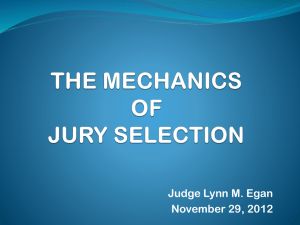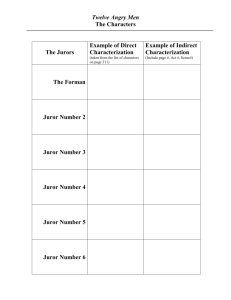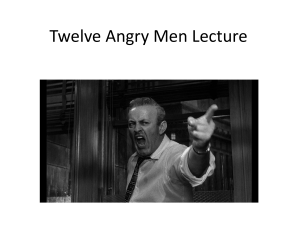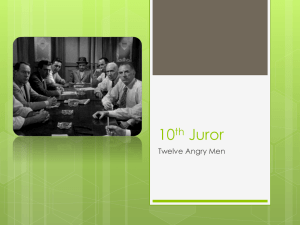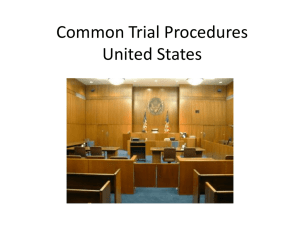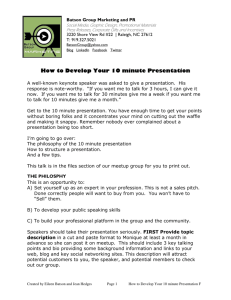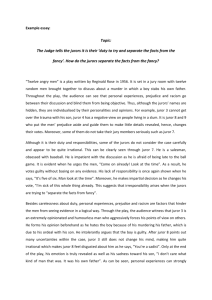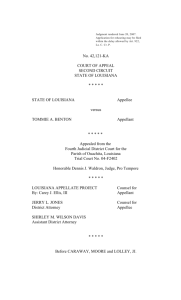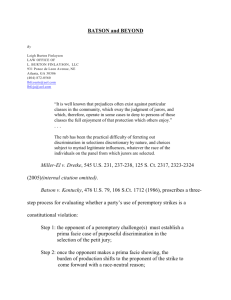JUDICIAL TRAINING UPDATE 13-2
advertisement
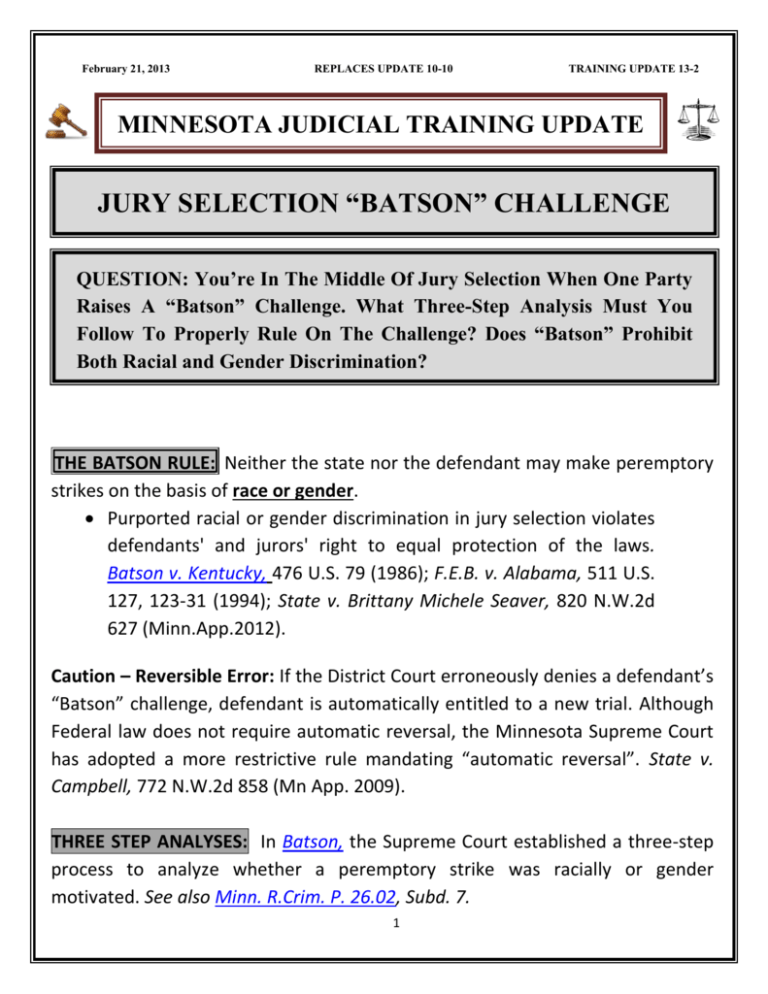
February 21, 2013 REPLACES UPDATE 10-10 TRAINING UPDATE 13-2 MINNESOTA JUDICIAL TRAINING UPDATE JURY SELECTION “BATSON” CHALLENGE QUESTION: You’re In The Middle Of Jury Selection When One Party Raises A “Batson” Challenge. What Three-Step Analysis Must You Follow To Properly Rule On The Challenge? Does “Batson” Prohibit Both Racial and Gender Discrimination? THE BATSON RULE: Neither the state nor the defendant may make peremptory strikes on the basis of race or gender. Purported racial or gender discrimination in jury selection violates defendants' and jurors' right to equal protection of the laws. Batson v. Kentucky, 476 U.S. 79 (1986); F.E.B. v. Alabama, 511 U.S. 127, 123-31 (1994); State v. Brittany Michele Seaver, 820 N.W.2d 627 (Minn.App.2012). Caution – Reversible Error: If the District Court erroneously denies a defendant’s “Batson” challenge, defendant is automatically entitled to a new trial. Although Federal law does not require automatic reversal, the Minnesota Supreme Court has adopted a more restrictive rule mandating “automatic reversal”. State v. Campbell, 772 N.W.2d 858 (Mn App. 2009). THREE STEP ANALYSES: In Batson, the Supreme Court established a three-step process to analyze whether a peremptory strike was racially or gender motivated. See also Minn. R.Crim. P. 26.02, Subd. 7. 1 February 21, 2013 REPLACES UPDATE 10-10 TRAINING UPDATE 13-2 1) FIRST: The objecting party must establish a prima facie case of purposeful discrimination (based on totality of relevant facts) showing that a member of a racial or gender group has been peremptorily excluded from the jury and that the circumstances of the case raise an inference that the exclusion was based on race or gender. 2) SECOND: If the party objecting to the strike establishes a prima facie case, then the proponent of the strike has the burden of articulating a race or gender-neutral reason for the exercise of the peremptory strike. The explanation given need not be “persuasive or even plausible” and that absent an inherent discriminatory intent it will be considered race-neutral. The focus of the inquiry is on the facial validity of the explanation. For example: Juror appeared less engaged; not receptive to questions; appeared to favor the state and/or the defense; juror’s hesitancy; relative’s involvement in law enforcement; preoccupation and anxiety about possible job loss and finances; lack of education; demeanor and tone; reluctance to sit in judgment, were all race or gender neutral reasons. 3) THIRD: The Court must determine whether the opponent of the strike has proven purposeful discrimination. This requires the objecting party to show both that the raceneutral reason was pre-textual and that the real reason for the strike was the prospective juror's race or gender. i) One way to show purposeful discrimination is to show that a party’s proffered reason for striking a prospective juror (of one race or gender) applies equally to a similar prospective juror of a different race or gender who is permitted to serve. ii) Sometimes the best evidence of the intent of the attorney exercising a strike is that attorney's demeanor. The Court’s disbelief of a race or gender-neutral reason put forward by the striking party might build upon the facts establishing the prima facie case to convince the Court that intentional discrimination has occurred. iii) Note on Juror Demeanor: Where the explanation for a peremptory challenge is based on a prospective juror's demeanor, the judge should take into account, among other things, any observations of the juror that the judge was able to make during the voir dire; however, a demeanor-based explanation need not be rejected if the judge did not personally observe or cannot recall the juror's demeanor. Thaler v. Haynes, 1305 S.Ct. 1171 (2010). 2 February 21, 2013 REPLACES UPDATE 10-10 3 TRAINING UPDATE 13-2
